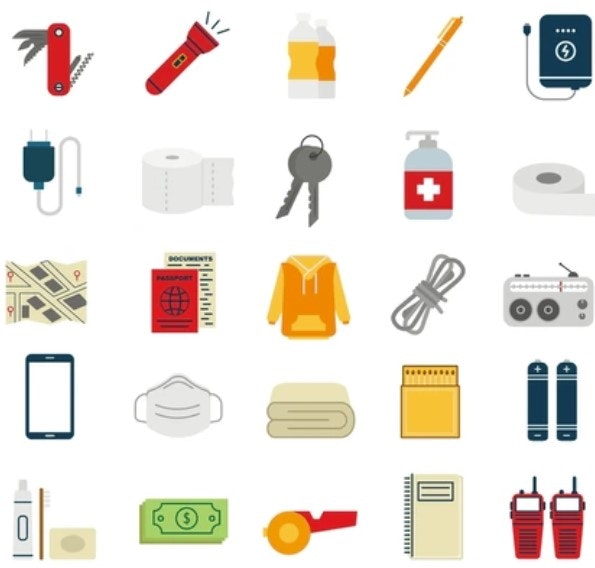Simple Steps to Get Ready
Prepare Today, Be Ready Tomorrow

We all benefit from preparing for disasters — and we all have different needs. Whether you're caring for children, seniors, pets, or managing medical conditions or disabilities, your plan should fit your life.
The important thing is to start. You don’t have to do it all at once. It’s okay to prepare step by step — every small action adds up and makes you more resilient.
Stay or Go — Be Ready Either Way
Whether you Stay (shelter in place) or Go (evacuate), being prepared can make all the difference. These tips will help you build a plan that works for your situation:
- Get alerts
- Make a plan
- Create a go bag & assemble a box
- Make a plan for pets and service animals
- Keep important documents accessible and protected
- Identify evacuation routes and shelter options
Start today—even one step forward is progress. Your safety and the safety of those you care about are worth the effort.
Step 1. Get Alerts

In a disaster you need to know what to do, where to go, and when. Sign up to get alerts from trusted local agencies:
- ReadySLO.org tells you when you need to take action to be safe
- PG&E alerts notify you when a public safety power outage might occur (you can sign up even if you are not an account holder)
Learn more about Alerts & Notifications.
Step 2. Make a Plan
Know who you will rely on and who relies on you.
- Establish an out-of-area contact and share your plan with the people you care about
- Write down important phone numbers (if you lose your cell phone or you can’t charge it)
- Choose a meeting place in case your family gets separated
- If you have pets, click here.
- If you have kids, click here.
Step 3. Create a Go Bag & Assemble a Box

Gather supplies and pack a bag to take if you have to evacuate. If you have to leave quickly, you may only have minutes to collect items, so pack a Go Bag now. Everyone in your household, including your pets, needs a Go Bag.
Gather supplies and assemble a box in case you have to shelter at home.
- Be prepared to shelter in place for 5-7 days
- Store food, water, and extra medications
- Know how and when to turn off your gas and water
Step 4. Join a Neighborhood Liaison Group
When a disaster occurs and people need help, neighbors turn to neighbors.
- Meet your neighbors now and share information, prepare, and train together
- Join a Neighborhood Liaison Group
- A community that knows each other is more resilient during and after a disaster
Learn more about Neighborhood Liaison Groups.
The ReadySLO.org website is full of helpful information and additional checklists for preparing.
